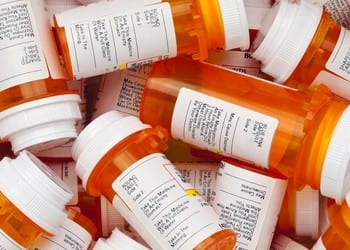ANNAPOLIS, MD—The Maryland Department of Health and Opioid Operational Command Center (OOCC) has released its 2019 second quarter report, which shows that Maryland has experienced its first six-month decline in the total number of opioid-related fatalities in at least a decade.
Release of the report comes during National Recovery Month, a time to raise awareness of substance use disorders and the resources available to end addiction.
In the first two quarters of 2019, there were 1,182 total unintentional intoxication deaths in the state, an 11.3% decrease as compared to the same period in 2018. Of that total, 89.7% (1,060) were opioid-related deaths, primarily attributable to fentanyl. Opioid-related deaths declined by 11.1%.
In addition, heroin-related deaths continued to decline, decreasing 14.9% through June 2019 compared with the same period in 2018. Prescription opioid-related deaths declined by 3.5% in the first six months of 2019 compared to the same period in 2018.
“Though the continued decline in fatal overdoses is welcome news, the heroin and opioid epidemic remains a crisis and we will continue to respond with all the tools at our disposal,” said Governor Larry Hogan. “The fight against heroin and opioid overdoses has torn apart communities and families throughout our state and across the nation. Together, we can and we must do more in order to save the lives of thousands of Marylanders.”
In 2017, Governor Hogan became the first governor in the nation to declare a State of Emergency in response to the heroin, opioid, and fentanyl crisis. The Hogan administration has implemented a number of policies related to the opioid epidemic, including the expansion of the Prescription Drug Monitoring Program and the provision of millions in grant funding to local health departments and treatment programs. It also established the Maryland Heroin and Opioid Emergency Task Force and the Inter-Agency Heroin and Opioid Coordinating Council, both led by Lieutenant Governor Boyd K. Rutherford.
“While we know there is still much work to be done with regard to this epidemic, the decline of heroin- and opioid-related deaths over the first two quarters of 2019 gives us hope that we are on the right track,” said Lt. Governor Rutherford. “We appreciate the efforts of all the stakeholders at the state and local levels, and in the medical and advocacy communities, who have been working with us over the last several years to implement a comprehensive, holistic response to this public health crisis.”
Fentanyl continues to be the deadliest substance, with 962 fentanyl-related deaths occurring in the first six months of 2019. This represents a 7.8% decrease over the same period last year. Fentanyl was involved in 90.8% of opioid-related deaths during this period.
Deaths related to cocaine, the third most prevalent drug involved with overdose deaths, declined as well. Comparing the periods of January through June 2018 and 2019, the number of cocaine-related deaths decreased 16.6%. The increase in cocaine-related deaths over the last several years can be attributed to cocaine combined with opioids, which were found in approximately 90% of cocaine-related deaths so far in 2019.
“Prevention and providing treatment 24/7 continue to be our priorities,“ said Maryland Department of Health Secretary Robert R. Neall. “We’re continuing our efforts to get naloxone out into the community and to train people on how to use it.”
The second quarter Fatal Overdose Data Report can be found here, and past quarterly reports here. The OOCC provides performance measures by state agencies and Maryland’s 24 opioid intervention teams, details about opioid-related spending, and information regarding Maryland’s fight against the heroin and opioid epidemic.
“We are confident that the right strategies are in place to advance Governor Hogan’s policy priorities of prevention and education, enforcement and public safety, and treatment and recovery,” said Steve Schuh, Executive Director of the Opioid Operational Command Center.
Before It’s Too Late is the state’s effort to bring awareness to this epidemic and to mobilize resources for effective prevention, treatment and recovery. Marylanders struggling with a substance use disorder can find help at BeforeItsTooLateMD.org, by calling 211 and pressing 1, or by texting their ZIP code to 898-211.
Do you value local journalism? Support NottinghamMD.com today.

